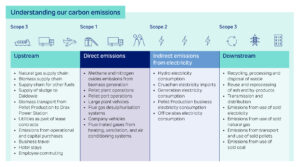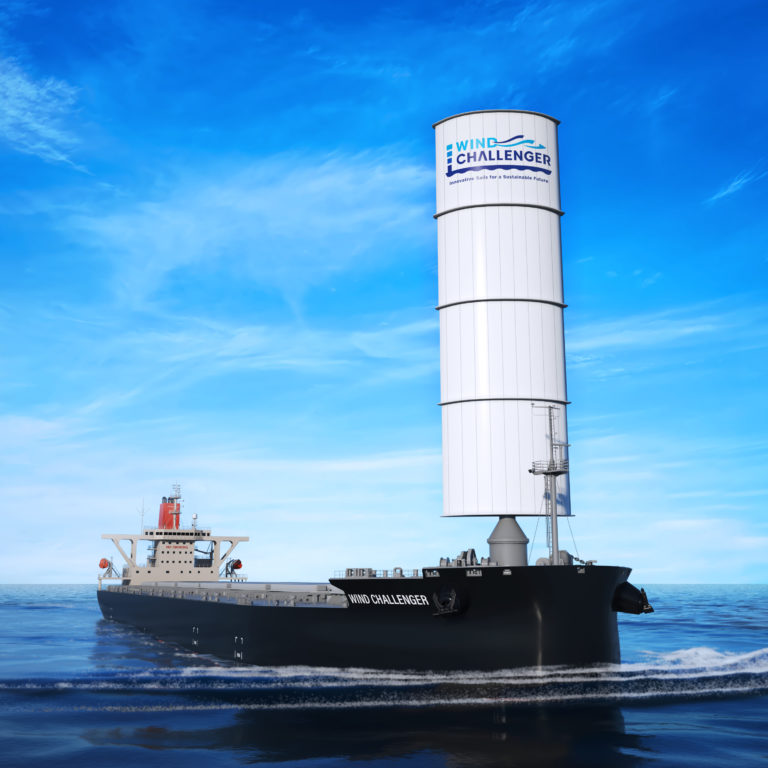Tackling climate change is at the heart of our purpose and we are committed to helping the UK and the wider world to achieve its climate change targets.
Our carbon negative ambition
Our purpose – to enable a zero carbon, lower cost energy future – means Drax is investing to play a leading role in the UK’s journey to a net zero economy. In December 2019, at COP25 in Madrid, we set an ambition to be carbon negative by 2030. This purpose and ambition drive our commitment to address climate change. Since 2012, the Group’s actions have reduced our generation Scope 1 and 2 carbon emissions by approximately 99%.
At Drax, we have set an ambition to be carbon negative by 2030 by removing more carbon from the atmosphere than we produce (Scope 1 and 2), helping the UK achieve its net zero target. By then, BECCS at Drax could deliver up to 8Mt of CO2 removals a year. This would deliver over 15% of the carbon removals the UK requires to achieve net zero by 2050, according to figures provided by the CCC in their 2019 Net Zero Report.
We aim to achieve our ambition of being carbon negative by 2030, by reducing our emissions as far as possible Group-wide, while using removals delivered through BECCS to neutralise our remaining
emissions. In doing so, we will also support the UK Government and other businesses to achieve net zero carbon emissions. We are committed to the Science Based Targets initiative (SBTi) and have submitted our targets for validation. To align with our SBTi targets, Drax set a new baseline for our carbon emissions data, to ensure comparability to our 2020 base year.
Carbon and energy performance
In line with TCFD Guidance on Metrics, Targets and Transition Plans (October 2021), we disclose the following climate-related metrics:
| Unit | 2023 | 2022 | 2021 | 2020 | |
|---|---|---|---|---|---|
| Carbon Emissions | |||||
| Generation CO2 emissions(1) | ktCO2e | 141 | 310 | 525(9) | 1,687 |
| Group total Scope 1(2) | ktCO2e | 255* | 336 | 932 | 1,693 |
| Group total Scope 2 (location-based)(3) | ktCO2e | 231*(7) | 333 | 323 | 277(7) |
| Group total scope 2 (market-based)(3) | ktCO2e | 273* | 332 | 323 | 338 |
| Group total Scope 1 and 2 (location-based) | ktCO2e | 486 | 669 | 1,255 | 1,970 |
| Proportion of Group (Scope 1 and 2) emissions within the UK | % | 34* | 51 | 78 | 87 |
| Group total scope 3(4) | ktCO2e | 3,534* | 3,123 | 3,121 | 3,538 |
| Biogenic CO2 emissions(5) | ktCO2e | 11,463 | 12,130 | 13,415 | 13,627 |
| Carbon intensity | |||||
| Generation emissions per GWh of electricity generation | tCO2/GWh | 11* | 23 | 33(9) | 100(9) |
| Group emissions per GWh of electricity generation(6) | tCO2e/GWh | 39* | 49 | 78 | 117 |
| Group emissions per unit revenue(6) | tCO2e/£million | 62 | – | – | – |
| Total energy consumption | |||||
| Group total energy consumption | GWh | 34,113* | 33,341(8) | 44,113 | 44,491 |
| Group total energy consumption within the UK | GWh | 30,125 | 33,789(8) | 40,112 | 41,008 |
Note: The work to update the 2020 “baseline” carbon emissions data set has now been completed, to the extent that all material updates have been made to the data set, reflecting the impact on our emissions footprint of acquisitions, divestments and disposals that have taken place between 2020 and the present day.
Note: Carbon emissions are reported against a criterion of operational control. Carbon emissions are reported in units of carbon dioxide equivalent (CO2e) and include all greenhouse gases as required by the GHG Protocol.
* This metric was subject to external independent limited assurance by PricewaterhouseCoopers LLP (‘PwC’) as part of their assurance over metrics in the ESG Performance
Report 2023. For the results of that assurance, refer to page 10 in the ESG Performance Report 2023 (www.drax.com/esg-performance-report-2023) and for the Reporting Criteria in the ESG Databook (www.drax.com/esgdatabook2023).
(1) Generation emissions covers the total direct emissions from Scope 1 and indirect emissions from Scope 2 activities across our Generation sites.
(2) Group total Scope 1 covers all direct emissions from our own business operations, across all sites.
(3) Group total Scope 2 covers all indirect emissions associated with our electricity and heat consumption, across all sites.
(4) Group total Scope 3 excludes “downstream leased assets”; and categories “end of life treatment of sold products”, “franchises” and “investments” are not applicable.
(5) The biogenic CO2 emissions across the Group are zero-rated under the GHG Protocol methodology and our SBTi targets. Biogenic CO2 emissions are reported separately as “outside of scope” in ESG reports or under “Memo items” of UK Emissions Trading Scheme (UK ETS).
(6) Group emissions are total Scope 1 and 2 (location-based) emissions as reported.
(7) For 2020 and 2023 we have updated the location-based methodology, where the Group is able to apply our own generation (currently UK REGOs) and apply a zero-carbon factor for GB grid locations. Our updated methodology can be found on pages 21 to 25 in the Basis of Reporting. 2022 and 2021 have not been restated on the basis of it being impractical without having to incur undue costs or effort.
(8) 2022 figures restated due to error in calculation in 2022.
(9) 2021 figure was based on the ETS value of Drax Power Station and Daldowie only.














